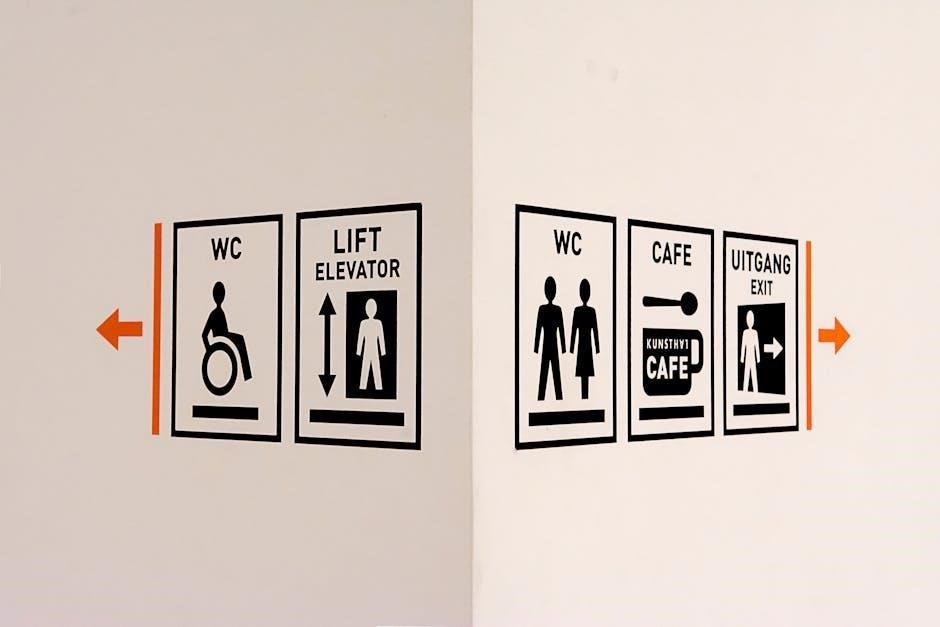2 post lift installation instructions

Proper installation of 2 post lifts requires careful planning and execution to ensure safety and functionality always using correct equipment and tools daily.
Understanding Space Requirements
To ensure a successful installation, understanding space requirements is crucial, measure the width of your doorway and divide it by two to find the center, this will help in positioning the lift correctly, taking into account the size of the largest vehicles that will be lifted, and considering the ceiling height and floor thickness, a minimum of 4-inch concrete is recommended, to provide a stable base for the lift, and to prevent any accidents or damage to the equipment, proper space planning is essential for a safe and efficient installation process always.

Pre-Installation Steps
Read the manual and measure the bay carefully before starting installation process daily using correct equipment and tools always.
Reading the Manual and Measuring the Bay
To ensure a successful installation, it is crucial to read the manual thoroughly and measure the bay carefully. The manual provides essential information on the installation process, safety precautions, and maintenance requirements. Measuring the bay involves determining the width and height of the area where the lift will be installed. This information is necessary to ensure that the lift fits properly and that there is enough clearance for safe operation. By following the instructions in the manual and taking accurate measurements, you can avoid potential problems and ensure a smooth installation process for your 2 post lift.
Key Considerations for Installation
Location and floor thickness are critical factors affecting installation success always requiring careful evaluation and planning daily.
Location and Floor Thickness
The location of the 2 post lift is crucial, requiring a flat and level surface, and a floor thickness of at least 4 inches of concrete to ensure stability and safety, the floor should be able to support the weight of the lift and the vehicles it will be lifting, and the location should be easily accessible and have enough space to accommodate the lift and the vehicles, proper placement is essential to prevent accidents and ensure smooth operation, and to maximize the lifespan of the lift and the surrounding equipment.

Setting Up the Lift
Setting up the lift requires careful attention to detail always using correct equipment and tools daily for safety.
Determining the Best Position
To determine the best position for the lift, consider the size of the vehicles that will be using it and the space available in the bay. Measure the width of the doorway and divide it by two to find the center point. This will help to ensure that the lift is installed in a way that allows for easy access and safe operation. The position of the lift should also take into account the location of any obstructions, such as pillars or other equipment, and should be installed on a level surface with adequate clearance. Proper positioning is crucial for safe and efficient use.
Essential Tools and Equipment
Specialized tools and equipment are necessary for installation always using correct machinery and devices for safety and functionality every time.
Choosing the Right Location
To ensure a successful installation, choosing the right location is crucial. The area should have adequate ceiling height and space for vehicle lifts. Consider the size of the vehicles that will be lifted and the amount of room needed to maneuver them. The location should also be easily accessible and have a solid concrete floor. A level surface is essential to prevent any accidents or damage to the lift. Proper planning and consideration of these factors will help determine the best location for the 2 post lift installation, ensuring safety and functionality always.
Installation Considerations
Concrete floor thickness and anchor bolt size are critical factors to consider during installation processes every time always.
Anchor Bolts and Concrete
The installation of a 2 post lift requires a concrete floor with a minimum thickness of 4 inches to ensure stability and safety. The anchor bolts used to secure the lift to the floor must be of the correct size and type to prevent damage or collapse. A minimum of 5 inches of good concrete is recommended to provide a solid foundation for the lift. The anchor bolts should be spaced correctly and tightened securely to prevent any movement or shifting of the lift during operation, ensuring a safe working environment always exists.

Additional Stress on the Lift
Lifts installed out of plumb cause uneven stress daily always requiring extra support and maintenance to prevent damage.
Engineering for Worst-Case Scenarios
Engineering for worst-case scenarios is crucial when installing 2 post lifts to ensure safety and prevent accidents. This involves assuming maximum weight capacity and calculating stress on the lift structure. A 12,000-lb capacity two-post lift has been shimmed 1/2 on just one side, requiring extra support and maintenance to prevent damage. Proper engineering and planning can help mitigate risks and ensure a successful installation. By considering worst-case scenarios, installers can design and implement a safe and reliable lift system that meets all safety standards and regulations, providing peace of mind for users and owners.

Final Checks
Verify the installation is complete and functional with all safety features intact and operating correctly every time always.
Verify the Installation
To ensure a successful installation, verify that all components are properly secured and aligned. Check the lift’s level and plumb to guarantee accurate operation. Review the manufacturer’s instructions to confirm that all necessary steps have been completed. Conduct a series of tests to validate the lift’s functionality and safety features. This includes checking the lift’s weight capacity, hydraulic system, and electronic controls. By verifying the installation, you can ensure a safe and reliable operation of the 2 post lift, preventing potential accidents and injuries. Proper verification is essential for a trouble-free installation.